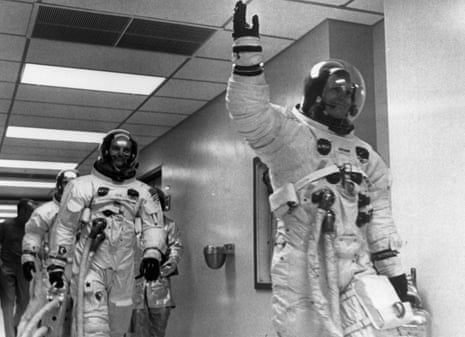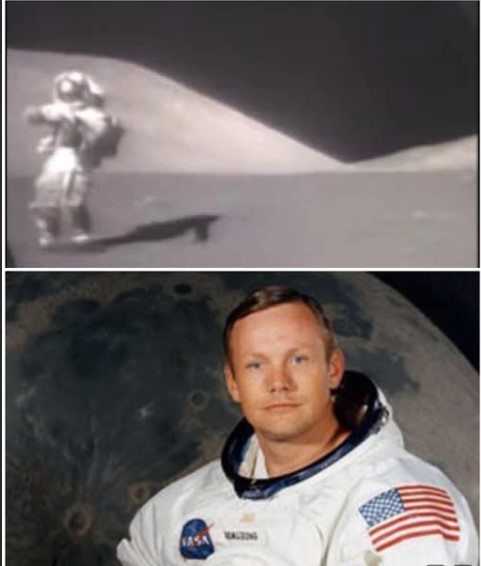 The Untold Story of Neil Armstrong: The First Man on the Moon in 1969! What Really Happened During That Fateful Journey Will Shock You!
The Untold Story of Neil Armstrong: The First Man on the Moon in 1969! What Really Happened During That Fateful Journey Will Shock You!
The year was 1969, and the world was on the brink of a new era.
The Space Race, a fierce competition between the United States and the Soviet Union, was at its peak.
With the Cold War casting a long shadow, the stakes were higher than ever.
The goal? To land a man on the Moon and return him safely to Earth.
NASA’s Apollo 11 mission was the culmination of years of research, planning, and technological advancement, and it was about to make history.
As the Apollo 11 spacecraft blasted off from Kennedy Space Center on July 16, 1969, millions of eyes were glued to their screens.
The mission’s crew consisted of three astronauts: Neil Armstrong, Edwin “Buzz” Aldrin, and Michael Collins.
While Collins remained in lunar orbit aboard the Command Module, Armstrong and Aldrin descended to the Moon’s surface in the Lunar Module, nicknamed “Eagle.
” The descent was fraught with tension; as they approached the Sea of Tranquility, Armstrong had to manually pilot the module to avoid boulders and craters, showcasing his exceptional skills as a pilot.
When the Eagle finally touched down, the world erupted in celebration.
Armstrong’s first steps on the Moon were broadcast live, captivating an audience of approximately 600 million people.

His famous words, “That’s one small step for man, one giant leap for mankind,” resonated through living rooms across the globe, symbolizing not just a personal achievement but a collective victory for humanity.
However, the journey was not without its challenges.
The Lunar Module had only a limited amount of fuel, and Armstrong’s last-minute adjustments during the landing were critical to their success.
Had he not acted swiftly, the mission could have ended in disaster.
Once on the lunar surface, Armstrong and Aldrin conducted experiments, collected samples, and took photographs, all while being acutely aware of the potential dangers surrounding them.
The Moon’s surface was an alien landscape, filled with fine dust that posed risks to both their equipment and their health.
They planted the American flag, a moment that would be etched into history, symbolizing not just a national achievement but a milestone for all of humanity.
As they explored, the astronauts encountered unexpected challenges.
The Moon’s gravity, only one-sixth that of Earth, made movement awkward and cumbersome.
Every step required careful planning, and the astronauts had to adapt quickly to their new environment.
They faced technical difficulties as well; the communication systems experienced intermittent issues, leading to moments of uncertainty and tension back on Earth.

Mission control, led by the legendary flight director Gene Kranz, worked tirelessly to ensure the astronauts’ safety and success.
While Armstrong and Aldrin were making history on the Moon, Michael Collins orbited above in the Command Module, waiting anxiously for their return.
His role, although less celebrated, was equally crucial.
Collins was responsible for maintaining the Command Module and ensuring that it was ready for the astronauts when they returned.
The isolation he experienced, circling the Moon alone, provided a unique perspective on the mission and the significance of their achievement.
After spending approximately 21 hours on the lunar surface, Armstrong and Aldrin returned to the Lunar Module and prepared for their ascent back to Collins.
The journey back to the Command Module was another critical moment, as they had to rendezvous in the vastness of space.
Successfully docking with Collins, the three astronauts began their journey back to Earth, bringing with them samples of lunar rock and soil that would provide invaluable insights into the Moon’s geology.
Upon their return, the astronauts were hailed as heroes.
The Apollo 11 mission not only fulfilled President John F.
Kennedy’s ambitious goal but also united people around the world in awe of human ingenuity and courage.

The mission’s success marked a turning point in space exploration, paving the way for future missions to the Moon and beyond.
However, the implications of their journey extended far beyond the realm of science and technology.
The Apollo 11 mission ignited a wave of interest in space exploration, inspiring generations of scientists, engineers, and dreamers.
It fostered a spirit of curiosity and innovation, leading to advancements in various fields, including telecommunications, materials science, and computer technology.
The images and footage captured during the mission continue to inspire awe and wonder, reminding us of what humanity can achieve when we dare to dream big.
Yet, the legacy of Apollo 11 is not without its complexities.
In the years following the mission, questions arose about the environmental impact of space exploration and the ethical implications of claiming territory beyond our planet.
As we look back on this monumental achievement, we must also consider the responsibilities that come with exploration and the need to protect the cosmos for future generations.
In the decades since that historic day in July 1969, humanity has continued to push the boundaries of exploration.
The lessons learned from Apollo 11 have shaped missions to Mars, the establishment of the International Space Station, and the ongoing quest to understand our universe.

As we stand on the brink of a new era in space exploration, the spirit of Apollo 11 continues to inspire us to reach for the stars.
In conclusion, Neil Armstrong’s first moon landing in 1969 was not just a remarkable achievement for NASA or the United States; it was a triumph for all of humanity.
It demonstrated our capacity for exploration, innovation, and collaboration.
As we reflect on this monumental event, let us remember the courage, determination, and ingenuity that made it possible.
The Moon may be a distant world, but the legacy of Apollo 11 serves as a reminder that with vision and perseverance, there are no limits to what we can achieve.
